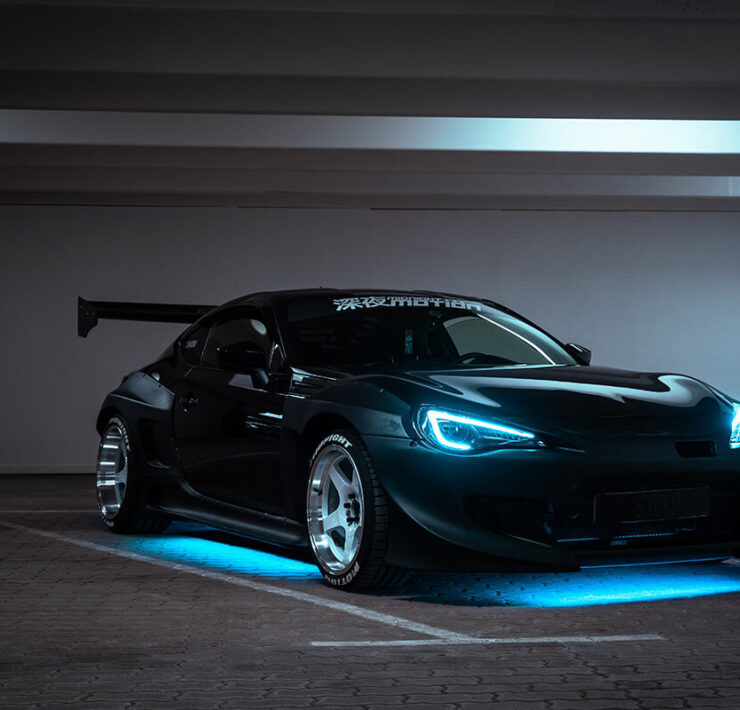Toyota Mark II 2 JZX90 – Specs & All You Need To Know Before Buying

The Toyota Mark II 2 JZX90 is a rear wheel drive sports sedan that was sold in Japan from 1992-1996. With its inline 6 cylinder turbocharged engine, the Mark II JZX90 has become a popular platform for building high horsepower drift and show cars. In this article, we’ll take a look at the key specs and details of the JZX90 that you need to know before picking one up for your next build project. We’ll cover the available engine options, aftermarket support, chassis strengths, and common issues to watch out for. Whether you’re looking to drift, show, or twist some wrenches on an iconic JDM chassis, read on to learn if the Mark II JZX90 is the right starting point for you.
Key Takeaways:
- Iconic and gorgeous JDM sports sedan with a 1JZ-GTE twin-turbo inline-6 producing 280hp stock.
- Luxurious and comfortable interior with great ergonomics, durable velour upholstery, and simple but clear gauges.
- Sophisticated double wishbone front and multi-link rear suspension tuned for good handling.
- Stable at high speeds but lacks steering feel and feedback for spirited driving enjoyment.
- Popular tuner/drift platform capable of over 500hp with mods, but needs chassis upgrades to handle the power.
- Strong aftermarket support with lots of tuning potential, especially now as JDM/90s cars gain popularity.
- Prices rising globally – good condition US imports now selling for $18k+. Vitality proven by high numbers still on the road after 25+ years.
- Some downsides like torque lag from turbos, noisy cabin at speed due to lack of window frames, and difficulty engaging manual gearbox.

1992-1996 Toyota Mark II 2 JZX90 Specs
Trim Levels: GL, Groire, Grande, Grande G, Tourer S, Tourer V
Engines:
- 1G-FE 2.0L I4
- 1JZ-GE 2.5L I6
- 2JZ-GE 3.0L I6
- 1JZ-GTE 2.5L twin-turbo I6 (Tourer V only)
Transmissions:
- 4-speed automatic
- 5-speed manual (1G & 1JZ engines only)
Drivetrains:
- Rear-wheel drive
- All-wheel drive (higher trims only)
Key Features:
- Fully automatic climate control
- Power options
- Luxury sedans with upscale features
Toyota Mark II Tourer V
Model Years: 1992-1996
Engine: 2.5L 1JZ-GTE twin-turbo I6
- 280 hp
- 209 kW
Transmission:
- 4-speed automatic
- 5-speed manual (optional)
Weight: 1,450 kg
Drivetrain: Rear-wheel drive
Key Differences with Base Model:
- Sport suspension
- Reinforced body
- Traction control
- ABS
- Optional Torsen LSD
- Popular tuner/drift platform

Full Model Review & Things to Know
Today I want to talk to you about a very special Toyota – the Mark II JZX90 Tourer V. This was the seventh generation Mark II, which debuted in 1992 as part of the ninetieth body series. Like all previous Mark II generations, it had a very short production run of only 4 years before being replaced.
Even though the JZX90 Mark II came out at the beginning of the 1990s, it was still very much a product of the extravagant 1980s for Toyota. That was the Golden Age of the Japanese auto industry, when companies had money to burn on daring experiments and expanding into new vehicle niches. Yes, the economic stagnation of Japan was setting in during the 90s, but the 1992 Mark II still retained that exuberant 80s spirit and design fervor thanks to inertia within Toyota.
The JZX90 captured the last thrilling gasp of the bubble economy through advanced engineering and over-the-top specifications. This hardtop coupe was the ultimate expression of Toyota’s technical confidence and pride before lean times prompted Toyotas to become appliance-like people movers.
What made the Mark II brochure so fascinating were the numerous unique options offered, chief among them being an interior vacuum cleaner system. While some refer to it as an ionizer, it primarily functions as a vacuum that draws air from the cabin into the trunk. Additionally, there was a vibro-cleaning mechanism for the rear view mirrors.
However, what intrigues us most today is not the standard Mark II, but rather the performance-oriented Tourer V sports version. As the driver-focused flagship of the Mark II lineup, the Tourer V represents Toyota’s ethos of driving enjoyment – that feeling of excitement when sitting behind the wheel ready to exploit the car’s potential. The Tourer V is the Mark II tailored specifically for driving enthusiasts, and the one most ripe for tuning to amplify an already stellar platform.
Exterior
But before we delve into the technical details, I want you to look at the silhouette of this car. You’ll agree, this is one of the most beautiful Japanese sedans of the 90s. Look at the visual size of the wheelbase. It seems to be big but in fact it is small, about the same as the BMW 3 Series E46 generation, while the length of this car is just under 4 meters 80 cm. But you’ll agree, it doesn’t look disproportionate or overly stretched at all.
Performance
The main difference setting apart the Tourer V from other Mark II models is its 1JZ-GTE inline 6-cylinder twin-turbocharged engine. First and foremost, the Tourer V focuses on comfort, with prodigious power as a secondary attribute. To extract more performance, owners often replace the factory parallel twin-turbos with a single, larger diameter turbocharger – popular choices include BorgWarner units like the 76-70 twin scroll turbo.
Boosting output necessitates upgrading other components like the fuel injectors and intake manifold to handle the increased airflow and fueling demands. Revising the valve timing to more durable profiles is also commonly done. Additional modifications involve installing a cold air intake kit for cooler inlet temperatures, along with a larger capacity Japanese-made radiator for superior cooling. It’s vital to avoid cheap Chinese-made parts that cannot withstand the stresses of high performance tuning.
With the right upgrades, the stock 280 horsepower 1JZ-GTE can reliably achieve outputs up to 500 horsepower or even more. This represents tremendous tuning headroom over the factory Tourer V specification.
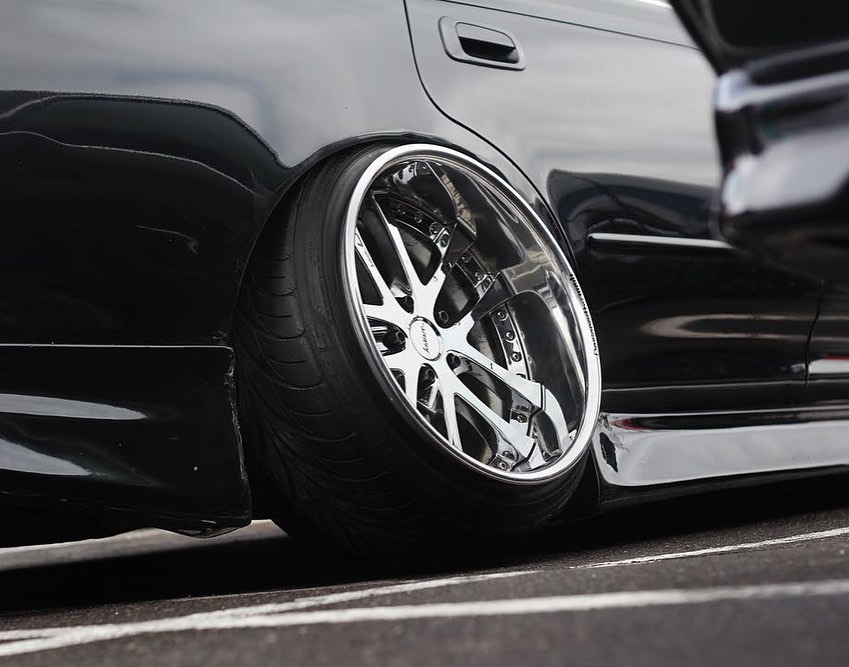
Suspension
With power outputs approaching 500hp, retaining the stock Tourer V chassis components becomes risky. Despite Toyota’s generally good brakes, even the standard Tourer V came equipped with front and rear floating calipers that represent an uncommon weakness. Upgrading to Lexus GS300 4-piston front and 2-piston rear calipers is a popular remedy.
Regarding suspension, the Tourer V gained thicker front anti-roll bars over regular Mark IIs, plus the addition of a rear bar and re-tuned shock absorbers. Further improvements come from the aftermarket, with Tein shocks, even thicker roll bars, and replacing rubber bushings with polyurethane versions being common modifications.
As mentioned, the Mark II exemplifies Toyota’s lavish engineering during the prosperous 1980s. This is evident in the Tourer V’s sophisticated double wishbone front and multi-link rear suspension designs. The rear incorporates special floating bushings that govern suspension geometry changes under hard cornering, known as elastokinematics. Toyota benchmarked contemporary BMW M5s when developing the Tourer V, seeking to match or exceed their handling.
In summary, while the stock Tourer V chassis is substantially upgraded, its ultimate capabilities demand additional reinforcement, correction of inherent flaws like the brake calipers, and expertise amassed from decades of enthusiasts extracting world-class grip and poise from the platform. When modified properly, it rivals some of the best sport sedans in this segment.
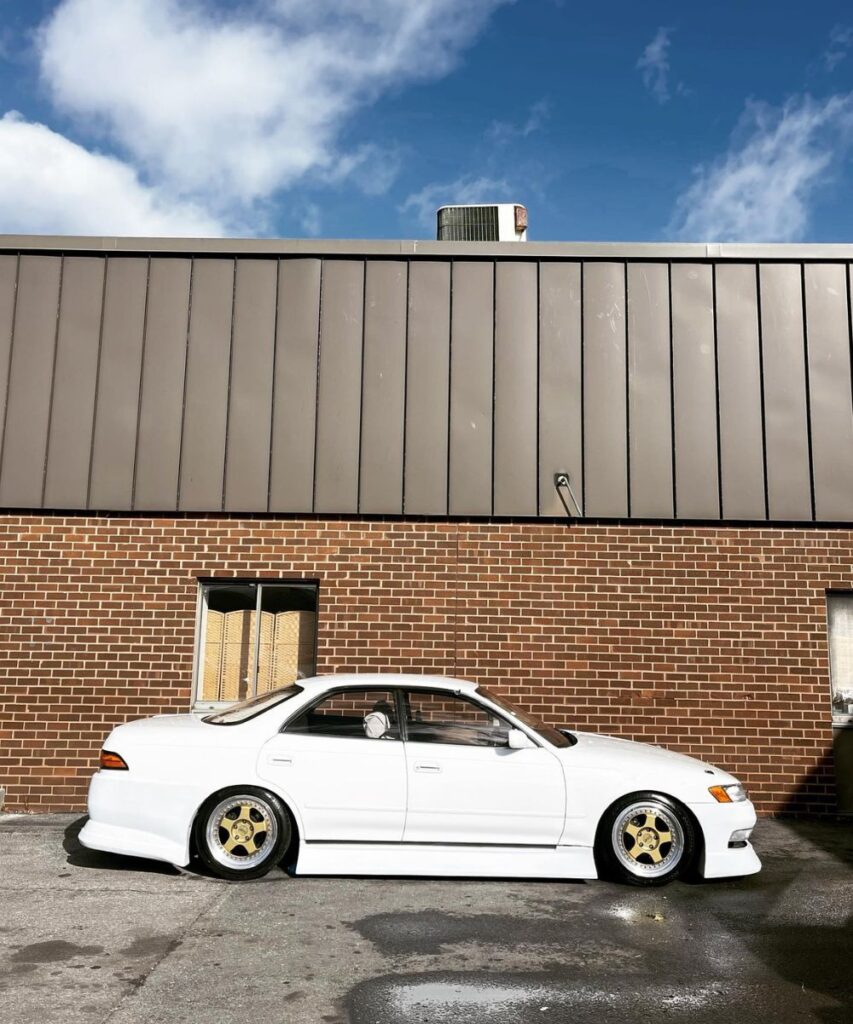
This awesome-looking Mark II Grande Street Drift project with 145k miles, 5spd MT Adjustable Coilovers, Stage 2 clutch & Welded Diff is selling for $15k by @methodautogroup
Reliability
I have immense respect for the Mark II JZX90, especially when I realize that even the newest examples are already a quarter century old. Yet in Russia, Asia, and even now North America, these cars continue to maintain a strong presence on the roads. People clearly get many years of quality service from their Mark IIs. This impressive longevity and durability is directly evidenced by their resale value longevity too.
For instance, demand among US collectors for clean Mark II Tourer Vs has been extremely vigorous lately. Enthusiasts are buying up nicest examples at Japanese auctions and importing them to America. Pricing starts around $18,000 even for baseline Tourer Vs in good condition. When you consider that context, it’s obvious why I and so many others hold the Tourer V’s robustness and capabilities in such high regard even today.
Interior
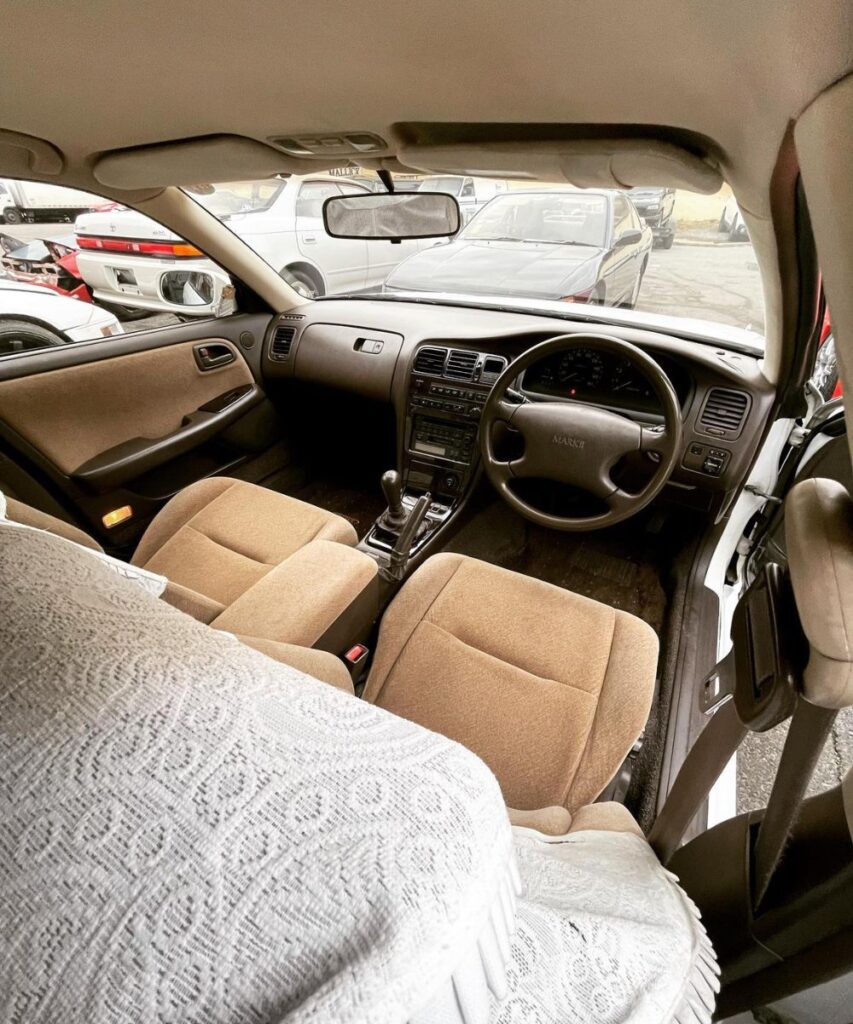
I have to spend a moment discussing the Mark II’s interior, because 1990s Japanese cabins have a certain nostalgic charm that’s sadly missing from today’s appliances on wheels. After driving a brand new Camry, I can definitively say the Mark II feels much cozier and better laid out ergonomics-wise.
I’m especially fond of the plush Japanese velour upholstery, known as microflock, covering the Tourer V’s seats and door cards. After 25 years, this fabric still looks fresh with no wear or tears – a testament to its durability. Microflock is also grippy, meaning Toyota could get away with more basic seat shapes while keeping occupants firmly planted during spirited driving.
Speaking of the driver’s throne, the Mark II locates it nice and low for an enveloping cockpit feel. My only ergonomic gripe is a lack of longitudinal seat travel compared to more modern cars – I wish I could stretch further back.
The Tourer V’s gauges are highly legible, but their simplicity is a concession to this top-trim model missing out on the striking digital clusters offered in lesser Mark IIs. Still, there is an honesty in the quintessentially Japanese function-over-form aesthetic that I appreciate. And few could call this interior anything but handsomely styled and more premium-feeling than contemporary BMW or Mercedes interiors.

Drifting in a Tourer V
Clearly, I’m driving the Tourer V in a pretty spirited manner here, my friends. The 0-60 mph run is dispatched in about 8.5 seconds. However, there’s noticeable turbo lag from the large twin scroll turbo unit since torque delivery down low is not great. To maintain momentum drifting through corners requires keeping the 1JZ spinning at higher rpm.
In all honesty though, the stock Tourer V failed to impress me with its balance and slidability. The feeling and control in power oversteer situations didn’t feel exceptional. Perhaps the culprit is the standard Torsen limited slip differential needing a swap for a higher performance aftermarket LSD instead.
If you’re wondering whether this car works well for drifting out of the box – having experienced one firsthand, I can tell you it definitely does not in stock form. Even with the enhanced sports suspension and geometry of the Tourer V, the overly soft factory self-locking diff is the Achilles heel. You sit waiting ages for it fully lock up mid-slide before it abruptly unlocks again. I couldn’t get a predictable feel for controlling drift angles as a result, despite my best efforts.
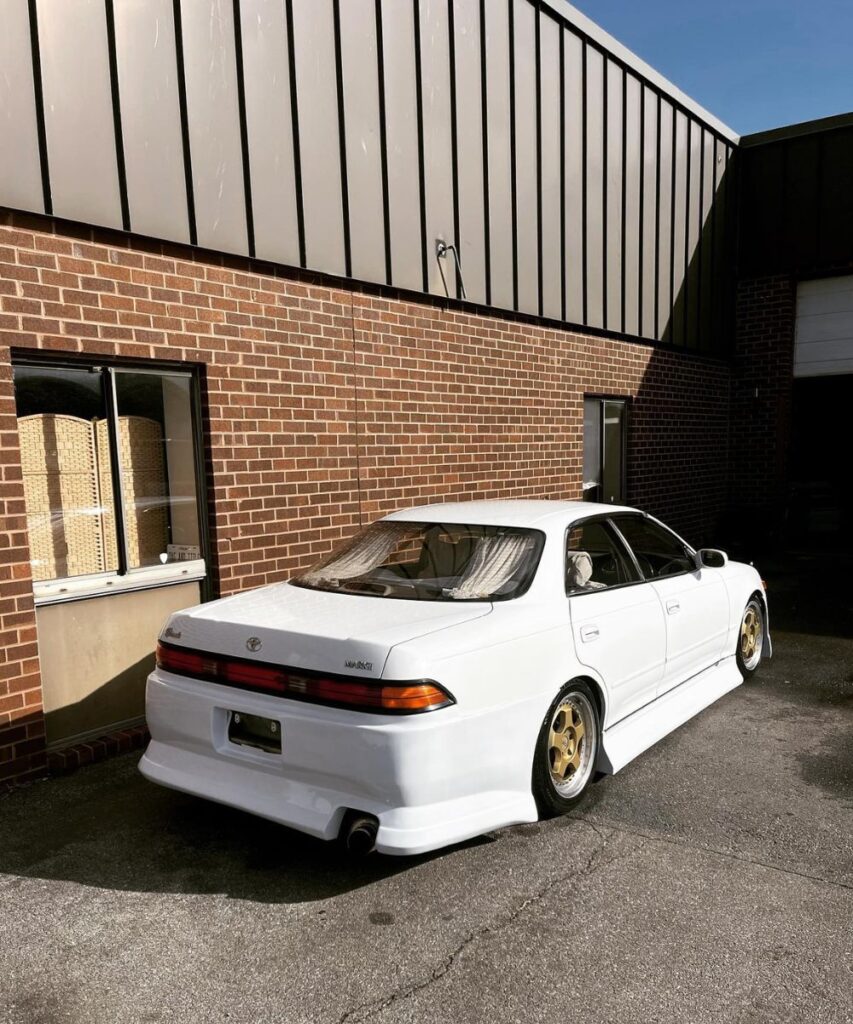
The Tourer V uses the same rugged manual transmission as the Land Cruiser SUV, although adapted to RWD. Consequently, lever throws between gears are quite short and engagements require considerable muscle. You truly need an aggressive masculine grip to work that shifter quickly and precisely.
Handling during Spirited Drive
Now for the part I was most interested in evaluating on the Mark II – how it actually handles and drives. Based on reputation, I didn’t set sky-high expectations for its dynamics.
Immediately evident is the Tourer V’s stability at speed in straight lines. The taut shocks and springs keep the chassis well controlled, allowing effortless long distance cruising that Toyota sedans are known for. But much more impressive to me is how well this Mark II handles cornering despite carrying the bulk of a heavy inline-6 up front and outside the wheelbase – a layout that should hamper maneuverability.
Don’t assume it wildly oversteers at the slightest steering input however. Reactions feel measured but responsive. Both medium-paced sweepers and tighter slow corners are tackled eagerly, with the rear wheels following the front’s lead. Carrying too much speed induces only mild understeer as the sedan smoothly regains composure.
Accelerating through fast curves reveals the rear multi-link suspension artfully managing weight transfer. It keeps the back planted while allowing the tires to track the tarmac’s contours and load up evenly. The sensation of everything working in harmony is fantastic.
So why does my face lack an ear-to-ear grin? Mainly because the Mark II isolates the driver from valuable mechanical feedback. The common trait I notice from Japanese cars of this vintage is rather numb and inert steering feel regardless of brand – Nissan, Toyota, etc. There seems minimal effort to communicate just how hard those front tires are working via the steering wheel.
Toyota steered lightly at low speeds thanks to a special valve in the steering rack, then add heft above 60 mph albeit without improving feedback. Similar systems blunt steering in the Silvia S14 and GT-R R33 too. Age likely compounds the rubbery helm sensation on my example as well due to mediocre chassis rigidity from ultra-thin pillars and lacking window frames. But these are acceptable tradeoffs for legendary 90 JDM feel of this car.
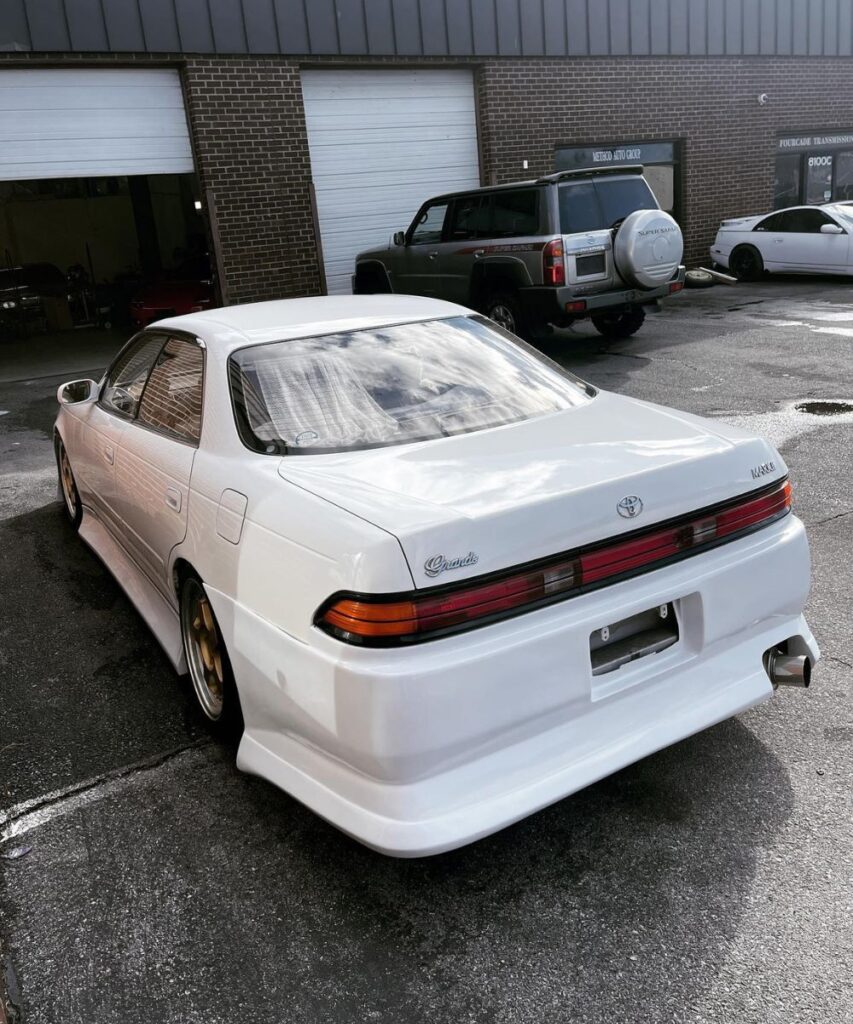
Conclusion
The Mark 2 is perfectly suited for a drift project, but if you want to enjoy it for spirited driving in the stock form there may be better options on the market of 90s performance-oriented cars.
The Mark II Tourer V is an ideal starter car for building a competitive drift machine. It comes equipped with the right ingredients – potent turbo I6, RWD drivetrain, and tuner-friendly chassis. However, as a stock road car, contemporary Japanese sports coupes deliver greater driving engagement out of the box. Options like the 350Z, Supra, RX-7, even non-GTR Skyline R34 Coupe may better suit enthusiasts not planning to modify.
Yet the Mark II’s resilience and modification friendly character holds enduring, unique appeal. Unlocking its fullest potential requires personalized enhancement that rewards dedicated owners. For those up to the task, transforming an already great Tourer V chassis into the stuff of legends is part of this Toyota’s turnkey appeal.
With more than 10 years of experience in various niches of the aftermarket parts industry, Matt is specialized in vehicle modifications of any sort. He appreciates the motorsports heritage and keeps his hand on the pulse of modern trends. His life goals are documenting the diversity of the modern automotive culture and inspiring others to build the cars of their dreams!




